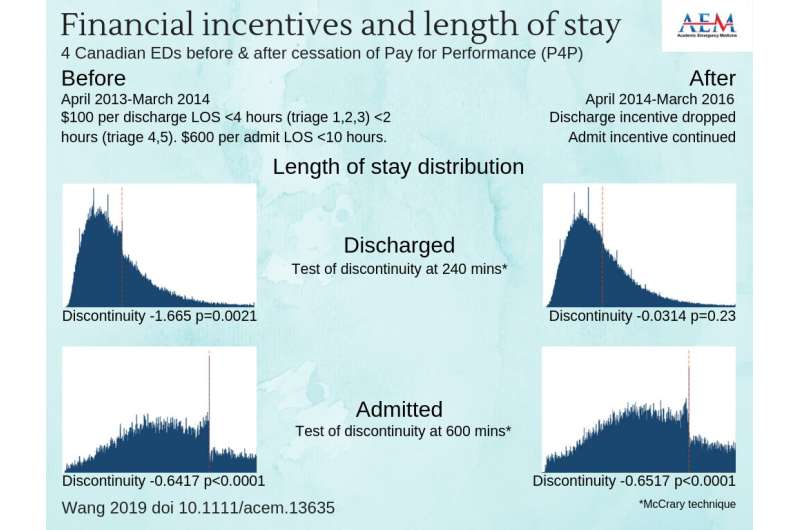Do financial incentives change length-of-stay performance in ED? Study results are mixed

The results of a retrospective study on a pay-for-performance (P4P) program implemented in Vancouver, British Columbia suggest mixed consequences—it can reduce access block for admitted patients but may also lead to discharges associated with return visits and admissions. The study is published in the August 2019 issue of Academic Emergency Medicine (AEM), a journal of the Society for Academic Emergency Medicine (SAEM).
The lead author of the study is Yuren Wang MS, from the College of Systems Engineering, National University of Defense Technology, Changsha, China. The findings of the study are discussed in a recent AEM podcast, Do Financial Incentives Change Length-of-stay Performance in Emergency Departments? A Retrospective Study of the Pay-for-performance Program in Metro Vancouver
The study by Wang, et al., suggests that the pay-for-performance program implemented in British Columbia affected the timing of patient disposition in the participating emergency departments (EDs). Such influence includes reduction in the ED length of stay for admitted patients, but possibly higher return-and-admission rate for patients who were discharged right before the target time in certain EDs.
The authors concluded that these observations suggest that we may only include the admission time target in a length of stay-based pay-for-performance program for now. While implementing the discharge target calls for further justification, one may consider combining it with other measurements preventing the potential risk of discharging patients prematurely.
Keith E. Kocher, MD MPH, associate professor in the departments of emergency medicine and learning health sciences at the University of Michigan, had this to say:
"This study provides an excellent post-mortem on the outcomes from a centralized pay-for-performance program applied to emergency care. As is typical, the results are mixed and demonstrate some of the inherent tensions and trade-offs when designing these programs: Is the problem important? Are the targets specified correctly? Are unintended consequences considered? Are the incentives enough to change behavior? You make the call."
More information: Yuren Wang et al, Do Financial Incentives Change Length‐of‐stay Performance in Emergency Departments? A Retrospective Study of the Pay‐for‐performance Program in Metro Vancouver, Academic Emergency Medicine (2019). DOI: 10.1111/acem.13635




















